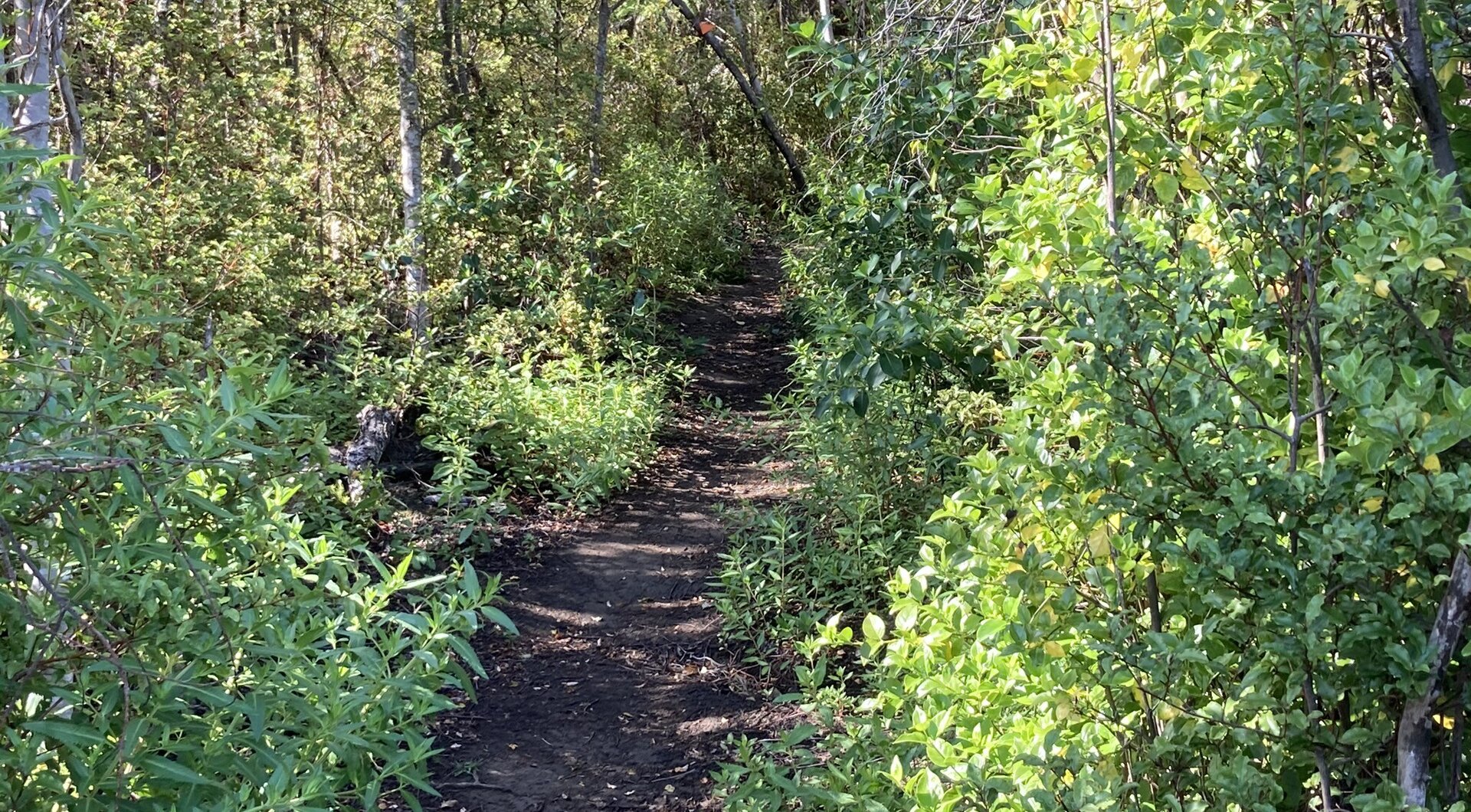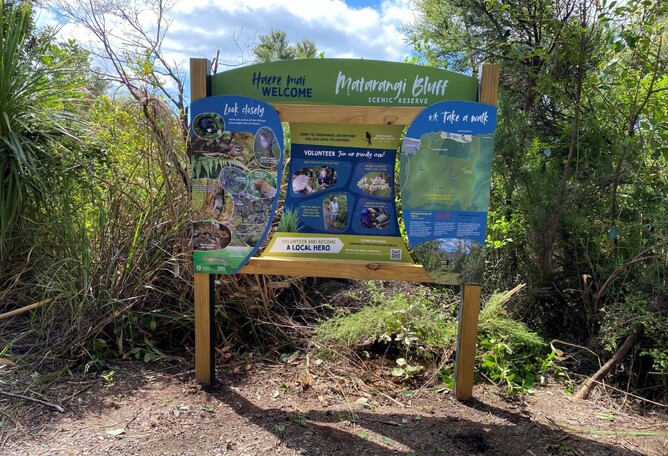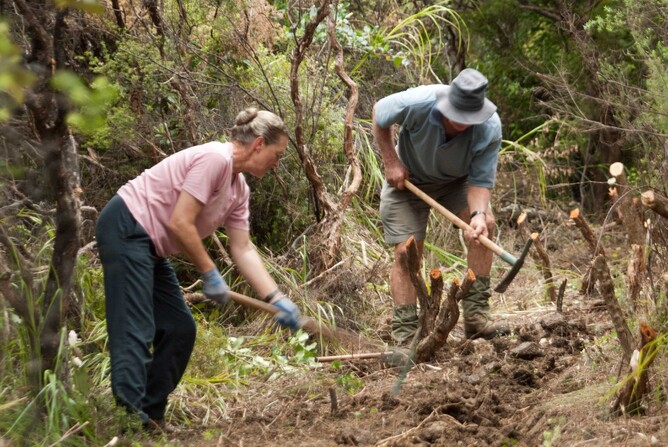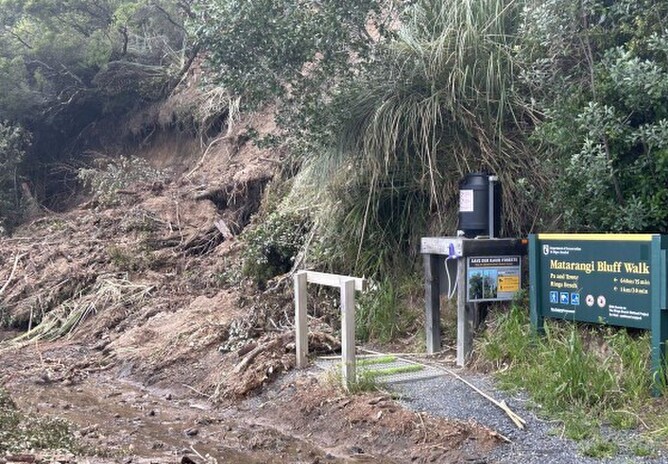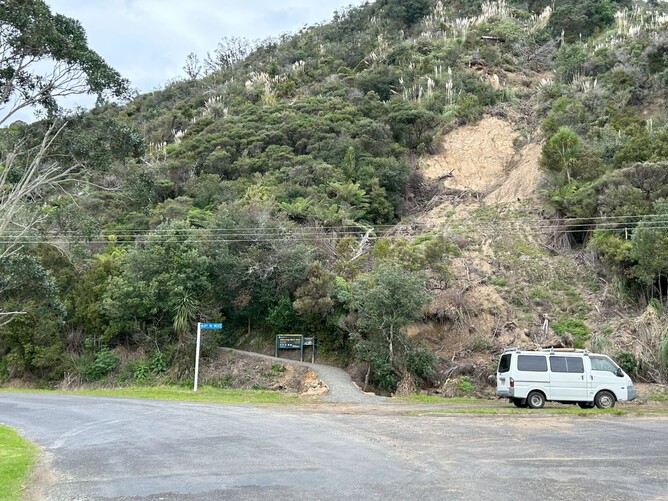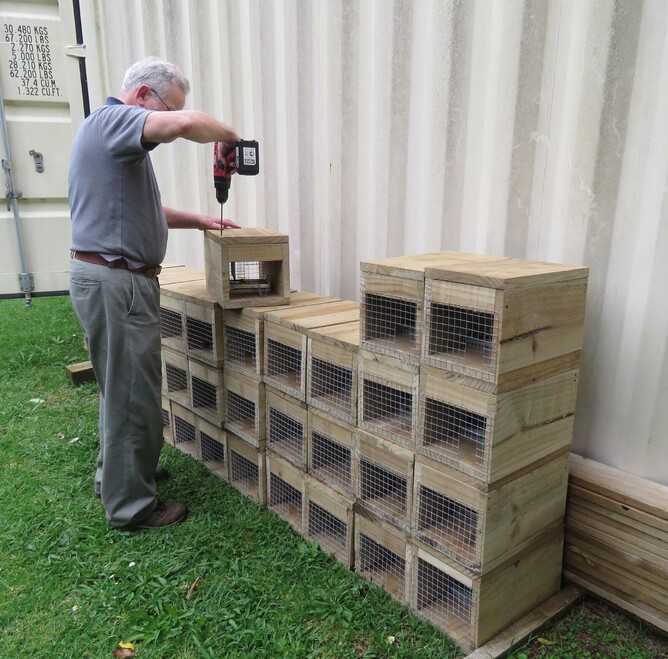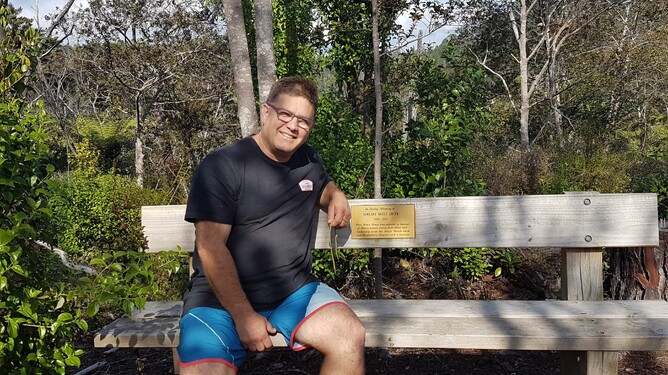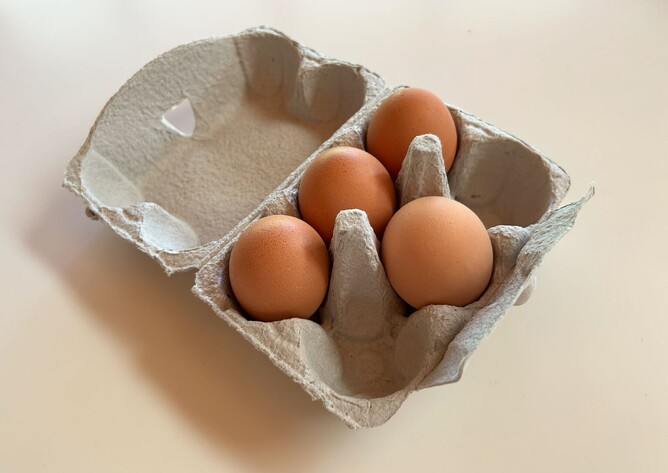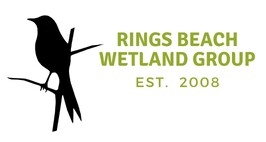A CHALLENGING YEAR
Despite the weather events earlier this year which hammered the Coromandel Peninsula (along with many other places in the North Island), we are pleased to have achieved some successes in the last year. Read on to see what we’ve been up to…
The pines are gone!
We are delighted to report that as a result of the significant funding from the National Wilding Conifer Control Programme that we reported in our previous newsletter (which was facilitated by the Kuaotunu Peninsula Trust), 99% of the mature pines in the reserve have now been either felled or poisoned.
This programme of work has been managed by Waikato Regional Council, ably led by Clark McMichael, whose help has been invaluable. In addition to the felling of the mature pines there was also a hand-pulling team that pulled thousands of pine seedlings in very difficult terrain along the Matarangi Bluff face.
We are hopeful of receiving further funding to continue to tackle the re-growth of the pine seedlings, especially as many of them are growing in terrain that is too difficult for our current volunteer base to traverse.
We are also very grateful to the Predator Free Hauraki Coromandel Community Trust who have helped with pulling weeds and clearing tracks, especially after Cyclone Gabrielle. We are looking forward to having them back, as there is no shortage of work for them to help us with.
New sign installed
The first of what will be 3 information signs has now been installed at the top of the ridge that is not far from the Matarangi entrance to the reserve.
Many local people and visitors to Matarangi and Kuaotunu walk the loop track through the reserve on a regular basis, but are unaware of the intensive conservation work that goes on in the reserve. We hope that these signs will not only be informative but will also encourage walkers and other visitors to support the work of our group by volunteering and/or contributing financially.
We would like to thank the Matarangi Ratepayers Association and The Canvas Company whose generous sponsorship enables us to achieve projects of this nature.
Last year we also received some valuable feedback which allowed us to make some changes to the directional signage within the rest of the reserve to make it easier to navigate the tracks. If you have any further ideas or feedback for us please don't hesitate to get in touch with us.
An important change
The Rings Beach Wetland Group is tremendously proud of its achievements since Bruce Smith first came up with the idea of creating a walking track in the Matarangi Bluff Scenic Reserve, and roped in Ian McDonald and Sarah Cooper to help him (see Ian and Sarah at work above).
It is now 15 years since the building of the walking track and the associated trapping tracks was commenced. With the exception of a few small, specialised projects that required the hiring of external contractors, the building of all the tracks, along with the ongoing maintenance of these and the weekly trapping runs, has been solely carried out by the volunteer members of our group. No small effort considering the length of the track and the size of the reserve!
We are delighted that most of our original volunteers are still heavily involved in the trapping and track maintenance activities. However after 15 years we cannot ignore the fact that many of our volunteers are ageing. We no longer have a single volunteer who is willing and able to spend significant amounts of his own time in the bush, nearly every day, making note of what maintenance needs to be done - and in most cases doing it himself. (Thanks Ian McDonald!). And as many other volunteer groups have found, it is not always easy to find new - and younger - volunteers to take over the reins.
It is vital that the conservation achievements of the volunteer members of our group over the last 15 years is not wasted. At its recent AGM, the Rings Beach Wetland Group therefore agreed to seek funding to allow two people (working 16 hours a month each) to be paid for maintenance services, which will include tasks such as clearing the walking track and the trapping tracks, building new trapping tracks, controlling weeds, and pulling pine seedlings that our volunteers can’t reach or which are too big for them to tackle.
The group will finance this position from its own funds for the first few months while it trials this arrangement, and will then seek funding to enable it to continue. We hope this change will enable the group to continue to build on its past successes well into the future.
The impact of Cyclone Gabrielle
As can be seen from the above photo, Cyclone Gabrielle in February caused a major slip which obliterated the Matarangi entrance to the track. The Department of Conservation engaged a contractor to repair the Matarangi entrance and we are pleased to announce that this entrance has now been re-opened:
There were two other big slips on the Matarangi side of the Vodafone track. But amazingly the main part of the reserve was relatively unscathed, other than a few downed trees here and there.
The work on the ground by our volunteers continues
We are pleased to announce that we have made significant progress towards our aim of trapping the entire boundary perimeter of the Matarangi Bluff Scenic reserve. We have completed the trapping tracks along the causeway road, around the southern wetland, and back up to the main track.
In order to make the most of our money, one of our volunteers, John Scott (above), built the rat trap cages and the stoat trap (DOC200) boxes.
Our plans to extend the trapping on the southern boundary have been put on hold because of the extra work generated by cyclone Gabrielle, but we are looking at carrying on with this work in the coming months.
Statistics for the last two years demonstrate the importance of continuing with our trapping efforts, with 171 possums, 358 rats, 7 stoats and 8 weasels caught in 2021; in 2022 these figures rose to 176 possums, 675 rats, 16 stoats and 16 weasels.
Over the last two years the Mercury Bay Area School and Kauri 2000 have worked together to plant around 800 trees, mostly kauri but also tanekaha and manuka. These were planted along the causeway boundary.
A sad anniversary
Late last year marked the 10th anniversary of the death of Bruce Smith, the man whose vision for the Matarangi Bluff Scenic Reserve led to the fantastic walking track that is now enjoyed by thousands of people, as well as the conservation efforts that go on throughout the reserve.
We are delighted that the connection with Bruce is being continued through his son Brendan (pictured above sitting on his father’s memorial seat in the reserve). Brendan is an ongoing sponsor of the Rings Beach Wetland Group through his company The Canvas Company. We know that his father would be very proud that his son is following in his footsteps and supporting the work that he started.
Can you spare some eggs?
Our trappers place eggs in stoat traps to lure in these trap-wary pests.
Unfortunately we are no longer able to source eggs from our usual suppliers, so we would greatly appreciate the donation of any eggs you might be able to spare. Note that the eggs can be a little past their use-by-date.
Richardsons Real Estate has kindly allowed us to place a crate in their office in which any spare eggs can be left. This will be emptied weekly.
Get involved…
We always welcome offers of assistance to help with our regular trapping programme targeting possums and mustelids. We have a small team that goes into the bush on a weekly basis, walking a dedicated trapping line. The time involved is usually about 2-3 hours.
If you would like to help but are unable to make a weekly commitment, we would be happy to let you know when our next working bee is scheduled. Please get in touch and we will add your email address to our list.
If your skills tend more to administration than physical exercise, we would still love to hear from you - there is always room for people who have something to contribute.
